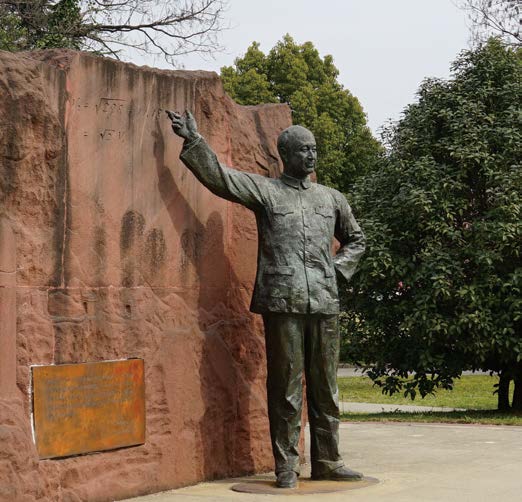For researchers in the engineering science and mechanics programmes at the University of Science and Technology of China (USTC), there is no question too complex or too small in their quest for answers with real-world impact. They are examining everything from the flow of arterial blood, to lasers for 3D printing. This multidisciplinary programme is expanding its core work in engineering mechanics and precision instruments to encompass a wider scope that includes new energy, safety, and other emerging engineering technologies. For example, research in precision machinery and instrument uses mechanical, optical, electrical and automatic controls and integrate computer science to develop robots, micro- and nano-electromechanical systems, and photoelectric information technologies. At the micro-nano engineering laboratory, led by Chu Jiaru, scientists are developing 3D micro- or nano-processing technologies based on the study of femtosecond lasers. The lab also works on ultrafast laser technologies, which are useful for high efficiency additive manufacturing tools, such as 3D printers, while others work on nanostructure self-assembly, laser fabrication of functional surfaces, liquid-phase atomic force microscopy and precision printing. Green manufacturing, renewable energy and biomedical engineering also stand to benefit from the lab’s nano-measurement technology (based on the use of scanning probe microscopy) and novel micro- or nano-measurement methods.

Bring in the mechanics
The USTC mechanics programme started from the Department of Modern Mechanics, established in 1958 by the prominent Chinese rocket scientist, Hsue-Shen Tsien. It addresses problems in space science, energy, transport, national defence, and equipment engineering by harnessing technologies ranging from fluid, solid, and engineering mechanics to biomechanics. The NSFC Innovative Research Group led by Lu Xiyun, for instance, is focused on fluid dynamics within vortexes, interfaces and blast waves. The team is also looking into what we can learn from the dynamics of swimming fish, birds and insects, arterial blood and microcirculation, with the latter potentially finding use in the design of microfluidic devices. The CAS Key Laboratory of Mechanical Behavior and Design of Materials, led by Wu Hengan, is devoted to material design, fabrication and application. By understanding the quantitative relationships between micro and macro, they seek to better control the microstructures of materials to achieve optimal macro-mechanical behaviours. The laboratory has recently discovered the mechanism behind the fast water transport in
atomic–precision capillaries. The permeation properties of these graphene nanocapillaries are controllable, shedding light on nanofluidic systems design. Another of their studies reported proton transport through two dimensional crystals, such as graphene, suggesting these materials will prove useful, for example, as proton membranes for hydrogen fuel cell technologies. The energy engineering programme at USTC seeks to solve key problems in solar energy conversion, storage and transmission. Researchers at the CAS Research Center of Solar Thermal Conversion, led by Ji Jie, are working on: the architectural integration of solar energy; the use of solar photothermal and photovoltaic energy; concentrating sunlight to produce heat for electricity generation; and providing technological support to scaled-up use of solar thermal systems. Researchers also work on combustion theories, heat transfer and conversion, energy saving and emission control, as well as biomass energy conversion and use.


